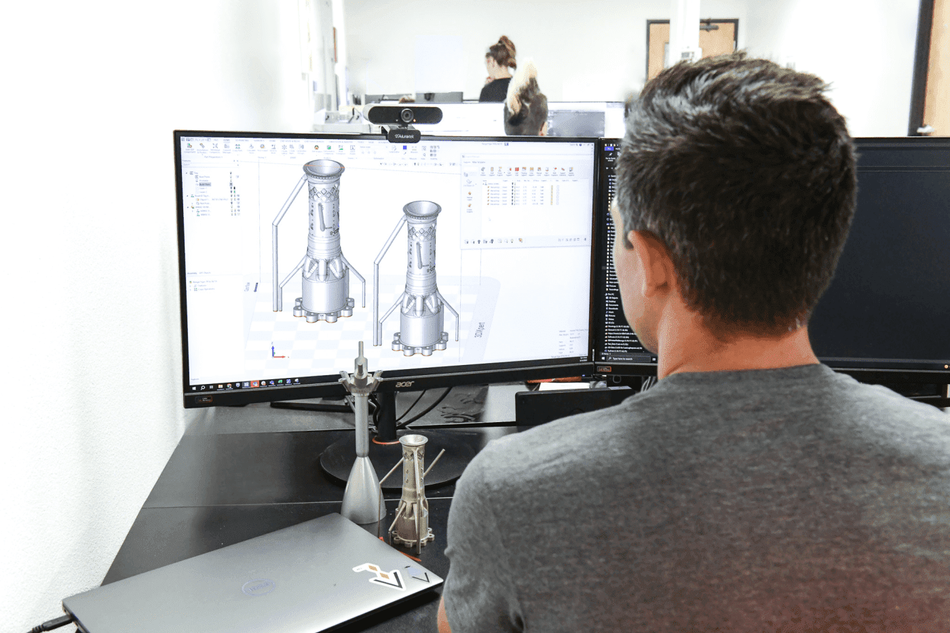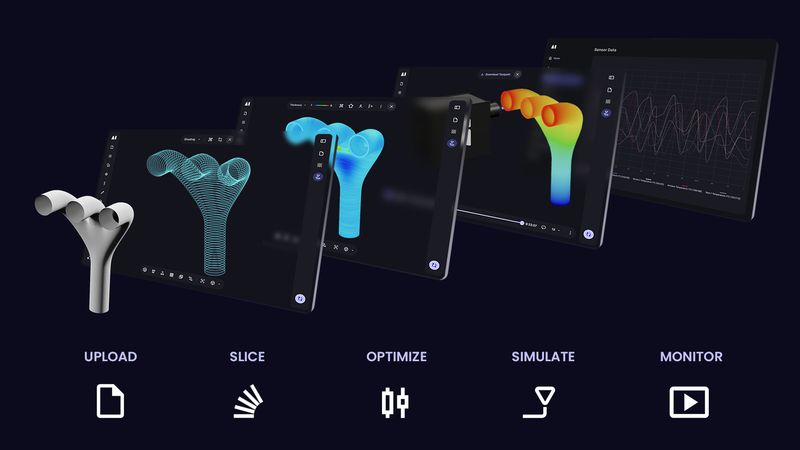The Metal 3D Printing Technology Report: Chapter 4: Design for Metal 3D printing
Metal 3D printing offers significant design opportunities with its high geometrical freedom, but it requires careful design for additive manufacturing (DfAM) to address equipment and material constraints, a process supported by DfAM and 3D printing simulation tools in most major CAD software.
Understand the Future of Metal 3D Printing
The Metal 3D Printing Technology Report is your essential guide to the latest advances, applications, and real-world insights into additive manufacturing with metal. Packed with detailed case studies, practical information, and interviews with industry leaders, this report reveals how metal 3D printing is transforming industries and pushing the boundaries of manufacturing.
Read the intro to the report here and an excerpt from chapter 4 below.
Introduction
Metal 3D printing opens up design opportunities due to its high level of geometrical freedom. However, like all technologies, it requires design for manufacturability (DFM) considerations, taking into account the physical constraints of the equipment and materials. In 3D printing, this design strategy is referred to as design for additive manufacturing (DfAM). Most major CAD software providers provide DfAM tools (as well as 3D printing simulation tools), as 3D printing hardware is now widespread.
Design opportunities
Compared to other metal manufacturing processes like machining, casting, and forging, 3D printing offers a number of design advantages, including:
Design freedom: Designs are unhindered by cutting tool access and other conventional manufacturing constraints; limitations (e.g. support structures to support overhangs) are minimal in comparison.
Multi-axis design freedom: Some DED systems offer multi-axis material deposition, enabling printing of unsupported overhangs and further design freedom.
Internal structures: Additive process allows for complex internal geometries and precise density control, giving a high level of control over part strength, weight, flexibility, and other characteristics, as well as allowing for cooling and fluid flow channels.
Lightweighting: Partly hollow designs allow for lightweighting of parts that would otherwise be conventionally manufactured.
Organic shapes: Generative design software can create complex, interlocking, or curved parts that mimic organic shapes.
Part consolidation: Metal 3D printing can be used to consolidate assemblies into simple parts, increasing production efficiency, improving performance, and increasing part service life.
Design limitations
Metal 3D printing offers a high level of design freedom, but it suffers from a handful of limitations. Some of these are technology-specific. For example, design for metal extrusion is governed by the limitations of both polymer extrusion printing and part sintering. Some limitations in metal 3D printing design include:
Thermal stresses: Since most metal 3D printing technologies require high temperatures, part design must minimize thermal stresses. This may be achieved by introducing corner radii, avoiding thin sections, etc.
Shrinkage: Several metal 3D printing technologies require sintering, which results in part shrinkage as voids are removed. This should be factored into design to ensure part dimensions fall within acceptance tolerances.
Trapped powder: Powder bed processes can result in powder trapped within hollow sections unless design allows the powder to escape.
Overhangs, bridges, supports: Supports are often required to support overhangs and bridges. Top-heavy or unbalanced designs may sag or deform during sintering or heat treatment.
Feature size: Processes like extrusion and binder jetting have a limited minimum feature size.
Tools for DfAM
Advanced CAD software may include tools for metal 3D printing design such as design validation, performance analysis, lattice generation, and topology optimization. Simulation tools for validating designs may be incorporated into CAD, CAE, CAM, or distinct process simulation software. Simulation of 3D printing processes typically involves advanced thermal modeling. Research shows that both topology optimization and generative design tools can be adopted at the early stages of 3D printing design to either create a geometry driven by functional requirements or to redesign components to make them lighter and stronger.
Generative design
Generative design is the use of algorithmic software to create novel designs based on user-defined constraints. It is generally employed during the conceptual design stage. While generative design is not unique to metal 3D printing, metal 3D printing is one of the few processes that can easily realize a broad range of generated designs. Altair Sulis is one example of a DfAM tool that uses generative design to generate AM-optimized designs.

Topology optimization
Topology optimization is a design strategy for optimizing the structure of a printed part, generally to reduce weight while maintaining strength. Unlike generative design, it is used to optimize specified shapes instead of creating designs from scratch. As with generative design, however, the freeform nature of 3D printing means that most designs can be realized. Software such as 3D Systems 3DXpert provides topology optimization tools for metal printing.
Lattice generation
Lattice structures are a key feature of metal 3D printing as they serve to maximize strength and minimize mass and cannot easily be produced using other manufacturing processes. Software can be used to automatically generate printable lattice structures within predefined boundaries. Siemens NX CAD is an example of an application that incorporates lattice generation for metal 3D printing design.
Get your report now
Read an excerpt from the chapters here:
Introduction Chapter
The Metal 3D Printing Technology Report is your essential guide to the latest advances, applications, and real-world insights into additive manufacturing with metal.
In the first chapter of our new report, we examine the dominant methods of metal 3D printing—metal laser powder bed fusion (LPBF), directed energy deposition (DED), metal extrusion, and binder jetting—as well as other still-emerging or more niche processes.
The metal additive manufacturing market features various feedstock types, with powder being the dominant choice for LPBF, some DED methods, and binder jetting. Metal wire and bound metal filament are also used in specific technologies.
In this chapter, we separate metal AM post-processing into four categories: debinding and sintering, CNC machining and milling, heat treatment, and quality assurance.
Chapter 4
Metal 3D printing offers significant design opportunities with its high geometrical freedom, but it requires careful design for additive manufacturing (DfAM) to address equipment and material constraints, a process supported by DfAM and 3D printing simulation tools in most major CAD software.
This chapter of the report will lay out and examine the various applications of metal additive manufacturing, with a particular focus on end-use applications in the dominant metal AM adoption industries.









